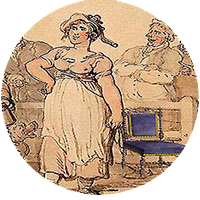漫画を通して:創造性、自信、流暢さ、記憶力などを上
Memory Training
Part #3/4
セクション#3: クリエイティブな
ビジュアル化による
記憶トレーニング<
MEMORY TRAINING thru CREATIVE VISUALISATION
そして、これがとても面白いところです...

学びにおける、あなただけの4次元学習へようこそ!
Welcome to (your personal harnessing of) the 4th Dimension in Learning..
And now for the really fun part....The most important part! Because, although shadowing and drills are essential to capture the essence of a word or phrase and the feeling of the person uttering them, unless you can remember them you haven't learnt them. And in order to do this you must MEMORIZE them correctly. This is where the Creative Imagination comes in. Enjoy!
And now for the really fun part....The most important part! Because, although shadowing and drills are essential to capture the essence of a word or phrase and the feeling of the person uttering them, unless you can remember them you haven't learnt them. And in order to do this you must MEMORIZE them correctly. This is where the Creative Imagination comes in. Enjoy!
Preparing your Holo-MeMe / Memory Images
Step two:
Create memorable images
from Keywords (or highlights)
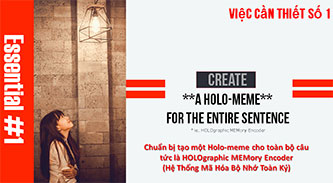

セクション3.1
KNOW THE WORDS
あなただけの記憶術を作ってください!
Creating your mnemonic!!(PREPARING YOUR Holo-MeMe aka MENTAL IMAGE)
メンタルトリガーのような記憶の符号化装置(視覚・聴覚・運動感覚・時間の4D)として動くホロミームのイメージをしてくだい。これが、 1)文章全体を暗記し、 2)それを思い出すのをサポートします。 自分自身の創造性により視覚化してください。ここからアイデアに繋がる背景を得たり、そのアイデアをサポートする神経学に関する研究を読んだりしてください。 これが想像における4つの基本的なステップです。
Create a moving image/Holo-MeMe-as a mnemonic encoding device, a kind of mental(4D visual/ auditory/ kinaesthetic/ temporal) trigger-to assist you in 1) memorizing the entire sentence then 2) remembering it. Any suggestions supplied are just that, ie suggestions; you are encouraged to creatively visualize your own.
1つめのステップ:
フレーズ全体に対するトリガーを作る
First Step: Creating a trigger for the entire phrase
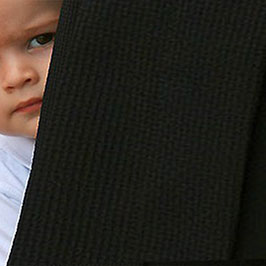
最初に必要なことはフレーズ全体に対するトリガーです。トリガーはどれほどおかしくても、どれほど馬鹿げていても構いません。私の場合は私がウィキペディアで見つけた15世紀の絵画のように上の例に沿っています。(fr. Liebeszauberによる愛魔)クリックして愛魔の全体をみてください。カタカナの「アイマ」は英語の「I'm a」(aɪmə)の発音と似ています。さらに「愛馬」はあなたの知的好奇心を満たしてくれるでしょう。
The first thing you need is a trigger for the whole phrase. This can be as salacious or as silly as you like. Or a little of both, in my case as exemplified in the above detail from a 15th century painting that I found on Wikipedia (愛魔 fr. Liebeszauber (aphrodisiac; English Love Magic). Click on it for the full view. The katakana rendition, "アイマ", is a close enough approximation to the phoneticization of the English sound of "I'm a" (aɪmə). The bonus 愛馬,is there to provide another vantage point for your educational amusement."I'm a shy guy" (aɪmə ʃaɪ gaɪ ənaɪ ˈhɑːdlɪ deəd .. tə tɔːk tə hɜː).
(Love Magic、すなわち愛魔)もしくは(Love Horse***、すなわち愛馬) (Love Magic ie 愛魔)もしくは(Love Horse ie 愛馬)
2つめのステップ:
キーワードについてイメージを
作る(もしくは大切なポイントについて)
Second Step: Creating images for the Key Words (or stress points)
上の例のような一つの記憶方法を使ってフレーズ全体を覚えることが目標なのは明白です。そしてあなたならできます!(曲の歌詞を覚える時のことを思い出してください)しかし、ほとんどの人々は記憶のプロセスの中で多くのキーワードを記憶を掘り起こすために必要としています。私の経験では、キーワードは少なければ少ないほど良いです。下の半分真面目で半分ふざけた漢字と意味がくっついているハイパーリンクつきのカタカナは単なる提案です。)
Obviously, your final goal is to remember the entire phrase from just one mnemonic, the above, for example. And you will!(Just think how you can often remember the entire line or verse of a song just from one word.) However, most people, for the memorization (and subsequent recall) procedure, need more key word triggers. In my experience, the fewer the better: too many means too much clutter. The following highlighted, hyperlinked katakana, accompanied by some half serious, half tongue-in-cheek kanji aqnd meanings, are mere suggestions.
3つめのステップ:
全てを動かしてください。
Third and Fourth Steps: Making it all Move and Re-enacting and Reciting
次は少し実行が必要です。これがあなたの記憶装置(ニーモニックコード/エンコード)が想像の中に現れる仕組みです。自明の事実ですが、最後の構想での説明と一致して自分自身で話すことを忘れないでください。
The next thing you need is a little action. Here is how one version of your full mnemonic encoding device (ニーモニックコード/エンコード) might appear in your imagination. I'll let it talk for itself but do remember to do some talking yourself in accordance with the instructions in the final panel.
Memory Training Exercise #1:
Example
* Holographic Memory Encoder

Preparing your Holo-MeMe / Memory Images

Second Step:
Creating/Preparing AgCs for the Key Words or Stress Points
Rõ ràng, mục tiêu cuối cùng của bạn là ghi nhớ cả cụm từ chỉ nhờ một gợi ý, ví dụ như câu trên. Và bạn sẽ làm được! (Hãy xem bạn có thể thường xuyên nhớ toàn bộ câu hoặc lời bài hát chỉ với một từ như thế nào). Tuy nhiên để ghi nhớ và nhớ lại liên tục thì hầu hết mọi người cần thêm từ khoá. Những tác nhân kích hoạt này tôi gọi là các Mã AudioGraphic, là những liên kết thần kinh trực tiếp giữa phát âm và ngĩa của câu.
Obviously, your final goal is to remember the entire phrase from just one mnemonic, the above, for example. And you will! (Just think how you can often remember the entire line or verse of a song just from one word.) >>> However, for deeper and more lasting encoding ie memorization and subsequent recall procedures, more key word triggers are often required. These triggers, which I call AudioGraphic Codes, serve as direct neurological links to pronunciation and meaning.
Hãy sử dụng chúng nếu bạn muốn, nhưng tốt hơn hãy dùng trí tưởng tượng của riêng bạn và một chút kỹ thuật Holo-MeMe©® đa chiều – như suy nghĩ và cảm nhận để tạo ra hình ảnh của riêng bạn.
Use them if you wish, but it would be preferable, using your own imagination and a little multi-dimensional Holo-meme©® -like thinking and feeling, to create your own.
このビデオもご覧ください。
日本語字幕がオンになっていることを確認してください。

4 way encode intro
Bước ba: Tạo Kết nối Thị Giác, Thính Giác và Cảm Giác Vận động.
聴覚、視覚、運動感覚、時間的つながりを作り出す方法
ここでの目標は、脳内の神経経路のシナプスに記憶を神経学的に埋め込むことです。 これを行うと、センス(sense)またはとモダリティ(modality)の同時接続が作成されます。 以下では、創造的な想像力を働かせて、4つの感覚の多次元および多感覚のつながりを作ります。
Creating Auditory, Visual, Kinesthetic and Temporal Connections()The goal here is to NEUROLOGICALLY embed the memory onto the synapses of the neural pathways in YOUR BRAIN. You do this creating simultaneous SENSE or MODALITY connections. In the following you engage YOUR CREATIVE IMAGINATION to make multi-dimensional and multisense connections of 4 senses:
Steps 3-6: Creating Auditory, Visual, Kinesthetic and Temporal Connections()
Mục tiêu ở đây là ghi vào bộ nhớ trên các khớp thần kinh của các rãnh thần kinh trong NÃO BẠN. Việc này giúp bạn tạo được các kết nối đồng bộ theo GIÁC QUAN hoặc PHƯƠNG THỨC. Ở những trang tiếp theo bạn sẽ được học cách sử dụng TRÍ TƯỞNG TƯỢNG SÁNG TẠO để tạo các kết nối đa chiều và đa giác quan liên quan đến 4 giác quan sau:
The goal here is to NEUROLOGICALLY embed the memory onto the synapses of the neural pathways in YOUR BRAIN. You do this creating simultaneous SENSE or MODALITY connections. In the following pages you engage YOUR CREATIVE IMAGINATION to make multi-dimensional and multisense connections of 4 senses:
Encode Visually
Encode from the Kinaesthetic
それでは用意されている材料を使用して、次に続く流暢さと記憶力を得るトレーニングを行いましょう:
Now, using the material provided, go through the Fluency and Memory Training Exercises for the following:
More Memory Training
それでは用意されている材料を使用して、次に続く流暢さと記憶力を得るトレーニングを行いましょう:
Now, using the material provided, go through the Fluency and Memory Training Exercises for the following: Going through the same five step procedure outlined in the above video, memorize the following sentences. Suggestions for whole sentence Holo-memes are provided, though it would be preferable to imagine your own. Remember to create your AudioGraphic Codes (AgCs) if required.
Memory Training Exercise #2
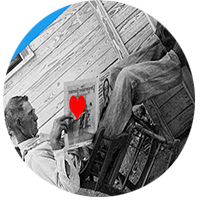
As I sat there, I suddenly fell in love with her.
/æz aɪ sæt ðeə aɪ ˈsʌdnlɪ fel ɪn lʌv wɪð hɜː/
KeyWords for Visual Mnemonics:アズサ・アズレア/冊/サドサドル(rig〈米方言〉(馬具の)・フェロ板 ferrotype plate or camera (play on the the letter l & r) ラブ・バッグ《The Love Bug》
TPP:3 Listen and notice how the consonant ending of a word is linked to the vowel beginning of the next word.
See also TPP2 above (here: linking of "t" and "th")
Memory Training Exercise #3
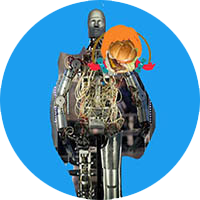
And it WENt on LIKE this for SOME weeks until....
ənɪt wentɒn laɪk ðɪs fə sʌm wiːksənˈtɪl.
Original image by Geoff Stearns from San Francisco, CA, USA (Android)
(See Note TPP:1.See also TPP2 above (Here: linking of "t" and "th") Android/Wendycollage/ウェンディーズ(ファストフードレストラン)/ ライクラ◆合成繊維 Original image by Geoff Stearns from San Francisco, CA, USA (Android)
Memory Training Exercise #4
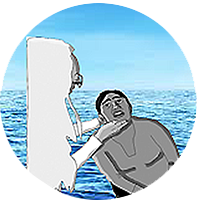
The diagnosis is obvious.
ðə ˌdaɪəgˈnəʊsɪ sɪzˈɒbvɪəs
See Note TPP:3 ダイ〔単数名詞として〕さいころ◆objet d'art (オブジェ)
Memory Training Exercise #5
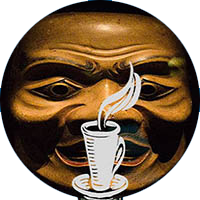
No coffee at all?
nəʊ ˈkɒfɪjətɔːl?
TPP:4 Listen and notice how a "j" sound is added between the two vowel sounds: the "ee" ending of "coffee" and the "a" at the beginning of "at". See Note TPP:2 (the "t" in "at" and the "a" in ""). noh mask/coffee in tALL glass 能マスク ◆ コーヒー ◆ 高いグラス
Memory Training Exercise #6

wʌn mɔː ˈkɒfɪ ənjə ded.
One more coffee and you're dead.
One more coffee and you're dead. wʌn mɔː ˈkɒfɪ ənjə ded. See notes TPP:1 and TPP:4 above or
uwan yokai/coffee cup/ うわん / コーヒーカップ "Suuhi Uwan" by Sawaki Sūshi (佐脇嵩之, Japanase, *1707, †1772) - scanned from ISBN 978-4-336-04187-6.. Licensed under パブリック・ドメイン via ウィキメディア・コモンズ - https://commons.wikimedia.org/wiki/File:Suuhi_Uwan.jpg#/media/File:Suuhi_Uwan.jpg + Mexican Day of the DEAD mask
Memory Training Exercise #7
